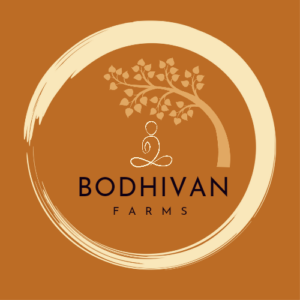Makar Sankranti: The Festival of Harvest and Renewal
Makar Sankranti, celebrated in January, holds a special place in the hearts of the people of Kangra. This festival marks the transition of the sun into the zodiac sign of Capricorn, signifying the onset of longer and warmer days.
In Kangra, it’s a time for rejoicing in the successful winter harvest and the promise of a bountiful spring.
The highlight of Makar Sankranti in Kangra is the tradition of kite-flying. Locals and enthusiasts gather on rooftops to compete in friendly duels with colorful kites. The skies are dotted with vibrant kites, and the atmosphere resonates with the sounds of cheers and excitement.
Makar Sankranti is also a time for feasting on traditional delicacies like sesame and jaggery sweets, freshly harvested grains, and dishes made from seasonal produce. It’s a festival that celebrates the unity of the community, the abundance of nature, and the joy of new beginnings.
Chait: Welcoming Spring with Reverence and Joy
Chait, celebrated in March, is a festival that welcomes the arrival of spring in Kangra. As the region begins to bloom with vibrant colors and fragrant blossoms, people come together to celebrate nature’s renewal.
During Chait, locals pay homage to the deities and offer prayers for a prosperous year ahead. They visit temples, including the renowned Chamunda Devi Temple, to seek blessings and participate in rituals. The festival also includes cultural programs, folk dances, and traditional music performances that showcase the rich heritage of Kangra.
Chait is a time when the beauty of Kangra’s natural landscapes is complemented by the spiritual and cultural vibrancy of the community.
Baisakhi: Harvesting Joy and Prosperity
Baisakhi, celebrated in April, is one of the most significant festivals in Kangra and marks the onset of the harvest season. It’s a time when the lush fields of Kangra are adorned with golden crops, and farmers celebrate the fruits of their labor with gratitude.
The festival begins with a visit to local temples, including the famous Jwalamukhi Temple, to seek blessings for a successful harvest. Then, people participate in joyful processions, dance to the beats of traditional music, and indulge in delicious Himachali cuisine.
Baisakhi in Kangra is a reflection of the region’s agricultural heritage and the spirit of thanksgiving for nature’s bounty. It’s a time when the entire community comes together to celebrate abundance and prosperity.
Haryali: Embracing Greenery and Nature’s Beauty
Haryali, celebrated in July, is a festival that embraces the lush greenery and natural beauty of Kangra. As the monsoon season blankets the region in a carpet of green, locals rejoice in the beauty of their surroundings.
The festival involves visits to scenic spots, picnics by riverbanks, and nature walks through the verdant landscapes. It’s a time for families to bond, appreciate nature’s wonders, and revel in the serenity of Kangra’s pristine environment.
Haryali is a reminder of the region’s ecological importance and the need to preserve its natural treasures. It’s a celebration of Kangra’s green heritage.
Sair and Nawala: The Festival of Forgiveness and Reconciliation
Sair and Nawala, celebrated in September, are unique festivals that emphasize forgiveness and reconciliation. These festivals hold great cultural and social significance in Kangra.
Sair is a ritual where people, especially women, seek forgiveness from their elders for any wrongdoings. It involves offering traditional sweets and gifts as a symbol of reconciliation.
Sair is a festival of thanksgiving celebrated in Himachal Pradesh, typically held in September or October. This festival coincides with the transition from the monsoon season to autumn and marks the time when the kharif (rainy season) crops ripen and are ready for harvest.
It is a time for expressing gratitude to the gods for a bountiful harvest, and various rituals and offerings are made. People offer a portion of their crops and seasonal fruits to the goddess Sairi, and special prayers are conducted to honor the crops. Additionally, sacred threads called “rakhi” are tied around the goddess’s shrine.
This festival ushers in the autumn season, and it’s celebrated with great enthusiasm and communal participation in Himachal Pradesh. In the Kangra district, the Sair festival is of particular significance, and delicious traditional dishes like patrode, pakoras, bhature, kheer, gul-gule, and chilroo are prepared during this time. These dishes are typically made in large quantities, shared among neighbors and relatives, and also exchanged between households.
Furthermore, the celebration continues with the custom of throwing popped rice or barley in the paddy fields the next day as a symbolic gesture to pray for a prosperous harvest in the coming year. Grains like rice and wheat are spread on a plate, adorned with seasonal fruits such as cucumbers, guavas, and pomegranates. The rituals commence the following morning, where the offerings are made with reverence.
History of Sair
This festival also has historical roots, dating back to ancient times when people faced various diseases and natural disasters during the monsoon season due to the lack of medicinal treatments. Those who survived these challenges considered themselves fortunate and began celebrating this festival as an expression of their gratitude. Over time, the tradition has evolved into a vibrant and lively celebration that continues to be observed with zeal and enthusiasm.
Nawala, on the other hand, is a ceremony where the elders bless the younger generation, fostering harmony within families and communities.
These festivals promote the values of forgiveness, unity, and love among the people of Kangra. They showcase the importance of resolving conflicts and maintaining strong familial bonds.
In Kangra, these festivals are more than just rituals; they are a testament to the enduring traditions and the spirit of forgiveness that binds the community together.
These festivals in Kangra reflect the region’s cultural diversity, natural beauty, and the deep-rooted traditions that have been passed down through generations. They offer a unique opportunity to experience the vibrant culture and spirituality of this enchanting part of Himachal Pradesh.
